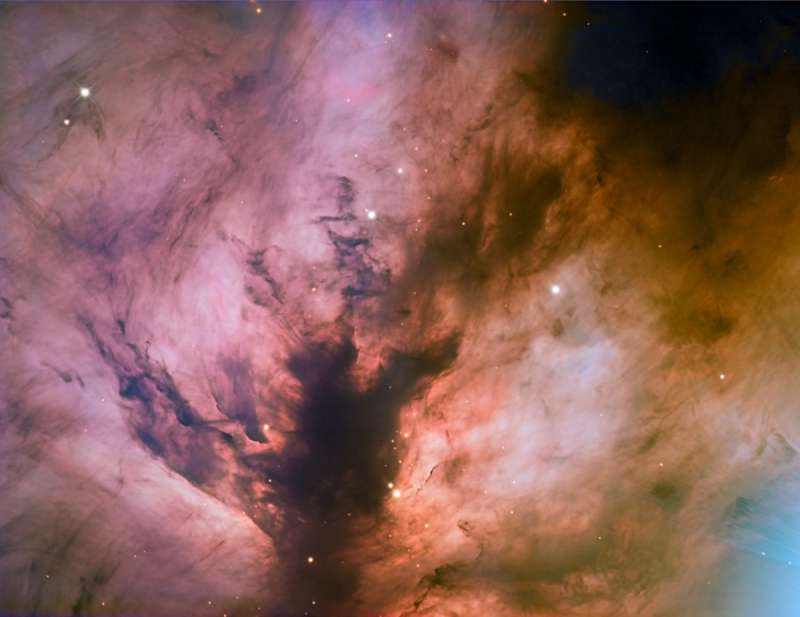Flame Nebula Close Up

Explanation:
Of course, the Flame Nebula is not on fire.
Also known as
NGC 2024,
the nebula's suggestive
reddish color is due to the glow
of
hydrogen
atoms at the edge of the
giant Orion
molecular cloud complex some 1,500 light-years away.
The hydrogen atoms have been
ionized, or stripped of their
electrons, and glow as the atoms and electrons recombine.
But what ionizes the
hydrogen
atoms?
In
this
close-up view,
the central dark lane of absorbing interstellar dust stands out
in silhouette against the
hydrogen glow
and actually hides
the true source of the Flame Nebula's energy from optical
telescopes.
Behind the dark lane lies a cluster of hot, young stars, seen
at
infrared
wavelengths through the obscuring dust.
A young, massive star in that cluster is
the likely source
of energetic ultraviolet radiation that ionizes the
hydrogen gas in the Flame Nebula.
Authors & editors:
Robert Nemiroff
(MTU) &
Jerry Bonnell
(USRA)
NASA Web Site Statements, Warnings,
and Disclaimers
NASA Official: Jay Norris.
Specific
rights apply.
A service of:
LHEA at
NASA /
GSFC
& Michigan Tech. U.

